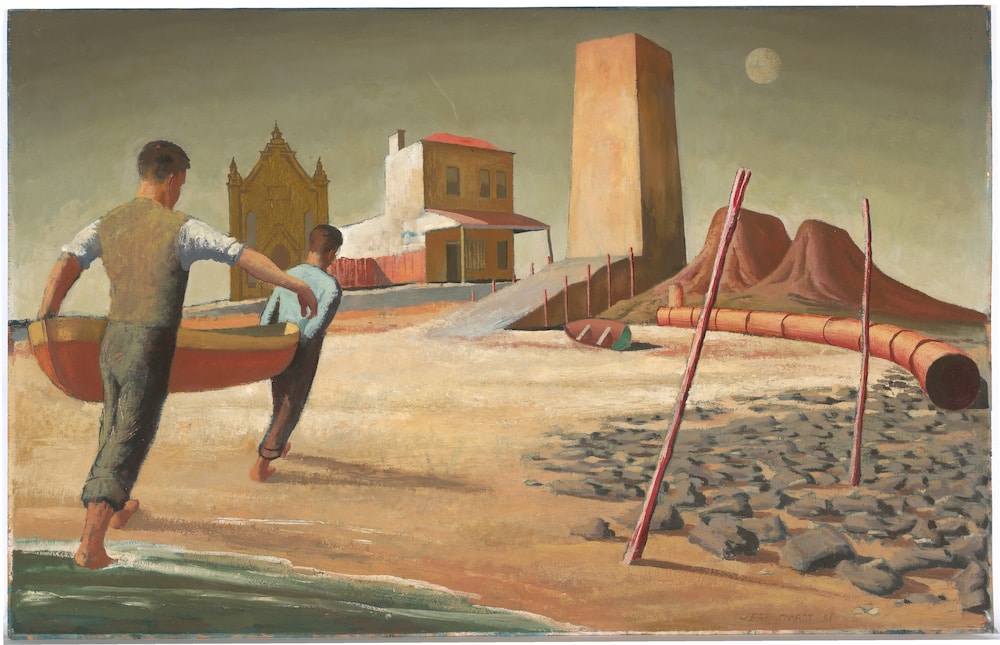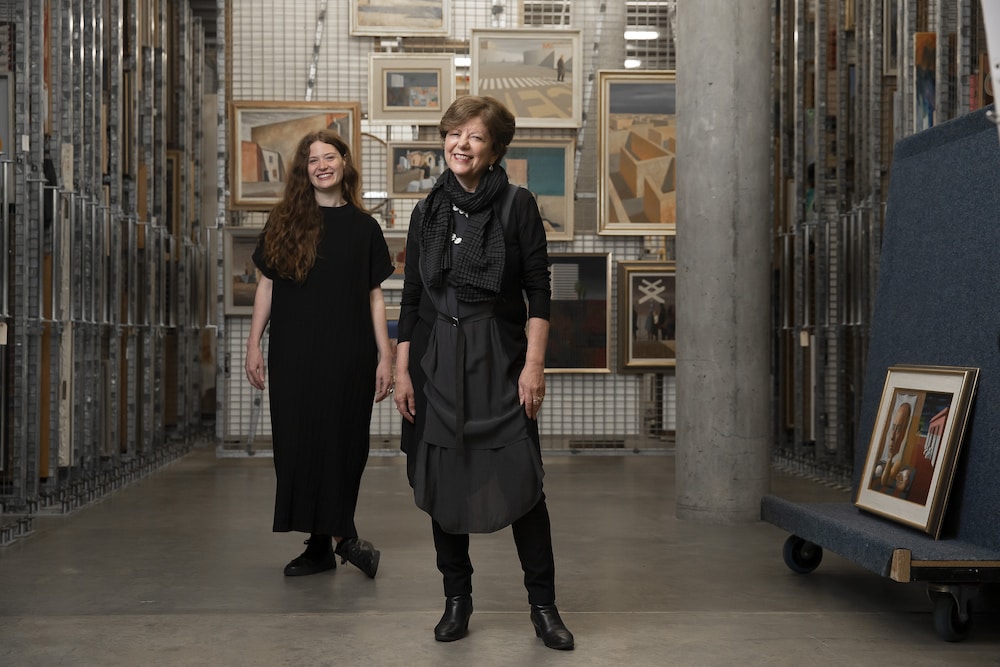The National Gallery of Australia staff were forced to work tremendously hard to ensure they could open summer blockbuster Jeffrey Smart in the 100th year since the distinguished Australian artist’s birth.
“It’s like five minutes to midnight, we got there just in time,” Co-curator Dr Rebecca Edwards smiled at the exhibition launch last week.
The eponymous exhibition, celebrating the life and work of the distinguished Australian artist, is now open to the public.
Renowned for capturing the urban environments of the 20th century, Smart’s work is celebrated for its geometric compositions, bold colour, architecture, and his depiction of humans within man-made environments.
The exhibition features 130 works from public lenders, private collectors, and the National Gallery’s own collection, presenting a thematic overview of Smart’s practice rather than being a more conventional major retrospective.
Divided by the locations Smart lived throughout his career, namely Adelaide, Sydney, Rome and Tuscany, Jeffrey Smart charts the artist’s rise; giving insight into his development as an artist and how he drew inspiration from his surrounds.
“We really wanted to bring some fresh perspectives to the work of Jeffrey Smart in the way that we curated the show,” National Gallery curator, Dr Barbara Hart, told Canberra Daily.
“We focused on the places that he lived and worked.”
While his work evolved greatly over the seven decades he painted, Hart said Smart’s work always demonstrated his love for geometry and strong connection to place.
“He’s kind of quite a complex artist in the way he unpacks things, and the love of geometry, that goes all the way through,” Hart said.
Smart’s time in South Australia is defined by a tonal, earthy palette before becoming much brighter once he relocated to Italy.
“As you come through, you see the transition in his work when he moved to Italy,” Hart said.
The exhibition begins and ends with two jewels in the crown of the national collection, 1951’s Wallaroo and 2011’s Labryrinth, Smart’s final work.
The decorated Wallaroo was a seminal acquisition for the National Art Advisory Board, the body that subsequently became the National Gallery, when they purchased it in 1959.
“It formed the nucleus of what we now know as the national collection,” Gallery director, Nick Mitzevich, said.
Smart’s final ever work, 2011’s Labyrinth was purchased posthumously by the National Gallery of Australia in 2014.
“It sums up seven decades of painting, it sums up a life,” Mitzevich said.
Jeffrey Smart is open at the National Gallery of Australia until 15 May 2022; click here for more.

Get all the latest Canberra news, sport, entertainment, lifestyle, competitions and more delivered straight to your inbox with the Canberra Daily Daily Newsletter. Sign up here.



